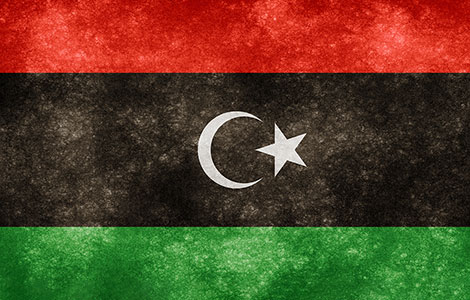This map shows the key players in the Middle East. For more on how Trump’s Middle East policy differs from that of Barack Obama, see Jack Thompson’s recent addition to the CSS Analyses in Security Policy series here. For more CSS charts, maps and graphics on proliferation, click here.
Tag: Regional Security

This article was originally published by the European Council on Foreign Relations (ECFR) on 2 August 2017.
Europe must use its diplomatic leverage to ensure that increased Russian involvement does not come at the cost of further destabilisation on Europe’s southern border.
Libya is increasingly a target for Russia’s growing ambitions to influence the Middle East and North Africa, but, judging by the Kremlin’s actions thus far, Putin is either hedging his bets or has not yet decided on his objectives for this file. European decisions – particularly those by the most active players, France, the UK, and Italy – could yet tip the scales in one direction of the other. Watching closely will be the new UN Special Representative of the Secretary General for Libya, Ghassan Salamé, who officially starts work this week after attending last Tuesday’s Paris summit between the internationally-recognised Libyan Prime Minister Faiez Serraj and his main rival, General Khalifa Haftar.
Torn between war and peace
On the one hand, Russia is naturally drawn towards supporting General Haftar, who opposes the Western-backed Prime Minister Serraj and is considered by many in Moscow as ‘the strongman of eastern Libya’. Haftar’s anti-Islamist stance makes him an attractive counterterrorism partner, and support for the general also strengthens Russia’s relationship with his main sponsor, Egypt. Limited support for Haftar also drags the conflict out, enabling Russia to point to the folly of the West’s intervention in 2011 and make the case that regime change, in Libya as in Ukraine, only breeds chaos.

This article was originally published by Pacific Forum CSIS on 21 April 2017.
The US has been contending with the challenge of the North Korean nuclear program for decades, yet we are no closer to the goal of convincing the North to abandon its nuclear ambitions. Indeed, that goal now appears unattainable under current circumstances.
Meanwhile the most serious threat facing the world today is the danger of nuclear proliferation. Both North Korea and Iran continue to develop nuclear weapons production capabilities. If they succeed, their regional neighbors will go nuclear in response, triggering a global cascade of proliferation. The resulting worldwide availability of nuclear weapons and fissile material to rogue states and terrorist groups will rapidly lead to a chaotic situation out of control.
The end goal of this strategy is a denuclearized Korean Peninsula, a North Korean economy that can sustain itself, a regional security environment free of military threats from North Korea, and decisive actions addressing the deplorable human rights situation throughout North Korea.

This article was originally published by the East-West Center on 2 March 2017.
In light of the recent summit between President Trump and Prime Minister Abe and the latter’s fifth year in office, it is a good time to take stock of the recent changes to Japan’s security policy. While these changes lie within a broader continuum since the 1950s of gradually moving away from the post‐World War II constraints, the recent reforms are notable for two reasons: quantity — much has been enacted, amended, or established; and quality — these changes are systemic.
Over the past five years, Japan has redefined its national security strategy and reshaped its postwar system of pacifism, offering more options to respond to and proactively shape its own security environment. The government has built a justification for adopting collective self‐defense, developed a broad political consensus about the security challenges facing Japan, and implemented a series of executive decisions through the legislature and bureaucracy. These reforms are fundamentally reshaping how Japan communicates, thinks about, and implements national security policy by establishing a new institutional culture. These changes should not be valued so much for what they are now, but for their potential.

This article was published by the European Council on Foreign Relations (ECFR) on 3 January 2017.
With both sides ignoring the decline of the liberal world order, the Brexit process is set to result in tragedy for both the UK and EU.
This past year changed everything, except how governments think. Nowhere is that more apparent than in the pre-negotiations for Brexit. With both sides ignoring the far-reaching implications of Donald Trump’s election as US president – namely, the decline of the liberal world order – the process seems set to produce a tragedy for the United Kingdom and the European Union alike.
Judging by the behavior of British Prime Minister Theresa May’s diplomats, one might believe that Brexit is the only real uncertainty nowadays. Indeed, they seem convinced that their only imperative – beyond protecting the unity of the Conservative Party, of course – is to secure as many benefits for the UK as possible.




